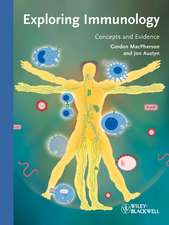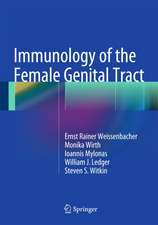Combination Treatment in Autoimmune Diseases
Editat de W.B. Harrison, B.A.C. Dijkmansen Limba Engleză Hardback – 26 feb 2002
| Toate formatele și edițiile | Preț | Express |
|---|---|---|
| Paperback (1) | 711.52 lei 6-8 săpt. | |
| Springer Berlin, Heidelberg – 30 noi 2010 | 711.52 lei 6-8 săpt. | |
| Hardback (1) | 715.91 lei 6-8 săpt. | |
| Springer Berlin, Heidelberg – 26 feb 2002 | 715.91 lei 6-8 săpt. |
Preț: 715.91 lei
Preț vechi: 753.60 lei
-5% Nou
Puncte Express: 1074
Preț estimativ în valută:
136.99€ • 142.75$ • 113.43£
136.99€ • 142.75$ • 113.43£
Carte tipărită la comandă
Livrare economică 03-17 aprilie
Preluare comenzi: 021 569.72.76
Specificații
ISBN-13: 9783540430360
ISBN-10: 3540430369
Pagini: 228
Ilustrații: VI, 213 p.
Dimensiuni: 155 x 235 x 19 mm
Greutate: 0.42 kg
Ediția:2002
Editura: Springer Berlin, Heidelberg
Colecția Springer
Locul publicării:Berlin, Heidelberg, Germany
ISBN-10: 3540430369
Pagini: 228
Ilustrații: VI, 213 p.
Dimensiuni: 155 x 235 x 19 mm
Greutate: 0.42 kg
Ediția:2002
Editura: Springer Berlin, Heidelberg
Colecția Springer
Locul publicării:Berlin, Heidelberg, Germany
Public țintă
ResearchCuprins
I General Section.- Combination treatment in autoimmune diseases — Introduction.- Combination therapy for autoimmune diseases: the rheumatoid arthritis model.- Methodology of combination trials.- Regulatory aspects of evaluating combination treatments in autoimmune diseases.- New therapies in development for autoimmune diseases: their rationale for combination treatment.- Combination therapy: the risks of infection and tumor induction.- II Disease specific section.- Combination treatment in autoimmune diseases: Systemic lupus erythematosus.- Combination therapy in autoimmune disease: vasculitis.- Combination therapies for systemic sclerosis.- Therapy of Sjögren’s syndrome.- Spondylarthropathies: options for combination therapy.- Combination therapy in rheumatoid arthritis.- III Futurology.- What will treatment of autoimmune diseases entail in 2010?.- Stem cell transplantation for autoimmune diseases.
Textul de pe ultima copertă
This book consists of contributions from the most prominent experts in this field. In the first section the general principles of combination treatment are discussed, from rationale and methodology to benefits of risks in daily practice. The second section concerns specific diseases. It is striking that although there is so much experience with combining DMARDS in RA, for several other autoimmune diseases combination therapy has not yet been developed. Denton and Black, on the other hand, are able to add a refreshing new meaning to the term "combination therapy" in systemic sclerosis by pointing out the aetiologies beyond those caused by immunopathology, and dealing with combinations of therapy to address issues beyond immunotherapy.The last section is devoted to the future and the editors hope to come back in 2010 with an issue which will look back and determine whether the predictions of Brooks, Moore, Huizinga and Breedveld have come true.









